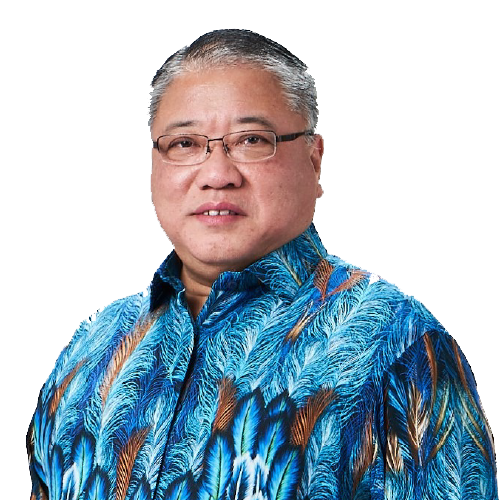About Malaysia
Knowing Malaysia
Malaysia is one of the countries in Southeast Asia. It is made up of 13 states and three Federal Territories covering an area of 329,845sq km. The country comprises two regions: Peninsular Malaysia or West Malaysia bordering Thailand to the north and Singapore to the South, and East Malaysia of Sabah and Sarawak, bordering Kalimantan of Indonesia to the south and Brunei to the north on the Borneo Island across the South China Sea. Malaysia is close to the Equator with a tropical rainforest climate. While Kuala Lumpur is the capital, the newly built Putrajaya is the seat of the Federal Government. The country has a population of 28 million and the Federal Constitution stipulates that Malay is the official language and Islam its official religion.
The Yang di-Pertuan Agong reigns as the Head of State and the Government is led by the Prime Minister elected by the majority party in the Parliament. Malaysia follows the Westminster democratic parliamentary system modeled after the United Kingdom, a legacy of the past colonial rule. Malaysia is a member of the United Nations, Indian Ocean Rim Association for Regional Co-operation, Asia-Pacific Economic Co-operation, the Commonwealth, Non-Alliance Movement, Organisation of Islamic Conference and a founding member of ASEAN.
Malaysia’s politics
The Federation of Malaya Constitution promulgated on July 2, 1957 stipulates that the political system of the country is a federal constitutional monarchy modeled after the British. With the establishment of Malaysia in 1963, the Constitution has been renamed the Constitution of Malaysia until today. The Yang di-Pertuan Agong is elected for a five-year term at the Rulers Conference by the Sultans of nine states and the Chief Ministers of Sarawak, Sabah, Malacca and Penang. The Yang di-Pertuan Agong is vested with the power to appoint the prime minister, disapprove any proposed legislation and dissolve the parliament. He is also the supreme commander of the armed forces.
The Parliament is the highest legislature comprising Dewan Rakyat (House of Representatives) and Dewan Negara (Senate). Dewan Rakyat comprises 222 seats held by MPs elected in the general election for a five-year term.
Malaysia’s economy
Malaysia is rich in natural resources. Its major exports are petroleum, rubber and palm oil. The manufacturing industry is a major contributor to the economy after the 1980’s while tourism is fast catching up as the second biggest foreign exchange earner. In the financial sector, Malaysia has been making vigorous efforts to develop Islamic financing in order to explore the vast opportunity in the Middle East market.
Under the macro-economic planning, Malaysia’s GDP averaged 6.5 percent between 1957 and 2005. In 2007, Malaysia became the third biggest economy in Southeast Asia and 29th worldwide. In 2009,Malaysia’s GDP expanded to US$383.6 billion and its per capita income rose to US$8,100. The economy was largely agro-based during the 70’s but after the 80’s, the manufacturing industry has become the engine of growth. Malaysia’s economy in fact recovered from the Asian financial crises much faster than its neighbouring countries and has returned to the pre-crises level after 2000.
Review of Malaysia-China diplomatic relationship
Relationship between Malaysia and China can be traced back to the Tang Dynasty (618 – 907) when a small number of Chinese emigrated and settled in the Malay Peninsula. About 600 years ago, Admiral Zheng He was commissioned by Emperor Yong Le (reigning from 1402 to 1424) of the Ming Dynasty in making seven voyages to the South Sea to enhance the friendly relationship with neighbouring countries. His legendary voyages spearheaded a flurry of diplomatic activities, resulting in a surge of interactions between China and Malacca. However, China subsequently was shut out by a self-imposed closed-door policy and with the occupation of Malacca by the Portuguese in 1511, the official relationship with China was suspended. The exchanges of trade and visit among the people however continued without any disruptions.
During the turbulent period between the Opium War and Second World War, a new wave of Chinese immigrants settled in Southeast Asia, forming a strong economic and social force. During WWII, overseas Chinese were the biggest financial contributor to China’s war against the Japanese invaders. Chinese settlers in the Peninsula were among the most active in the anti-Japanese resistance struggle which led to the atrocity and economic calamity that befell the Chinese during the Japanese occupation.
The British re-took Malaya after the surrender of Japanese but were met with a surging independence movement. During the struggle for independence, the allegiance of the Chinese came into focus. Eventually, the Chinese and other races went to the polls that led to the independence in 1957. Malaya joined the British Commonwealth as the youngest developing nation. After the independence, Malaya continued the anti-Communist policy inherited from the British and relationship between Malaysia and China deteriorated even further. The freeze began to thaw in the 1970’s with the ending of the Cultural Revolution.
The initial period in the diplomatic ties
Growing from strength to strength
All set for a take-off
Prime Minister’s Special Envoy To The People’s Republic Of China
cum Chairman Of Malaysia-China Business Council

